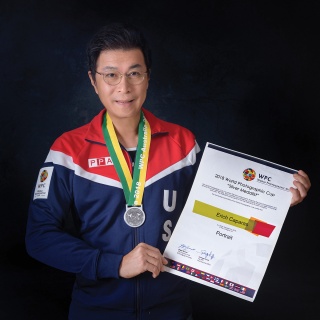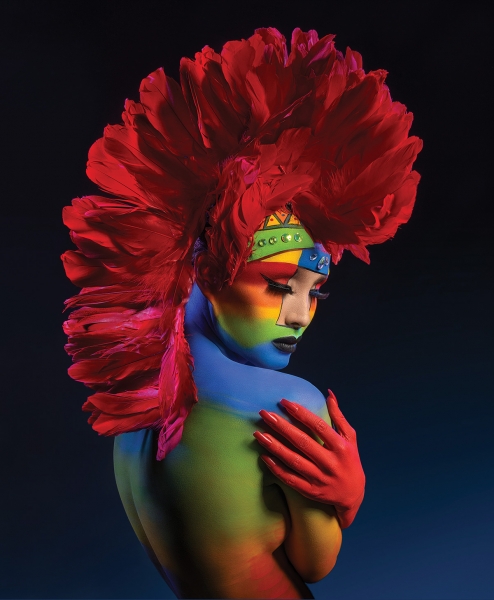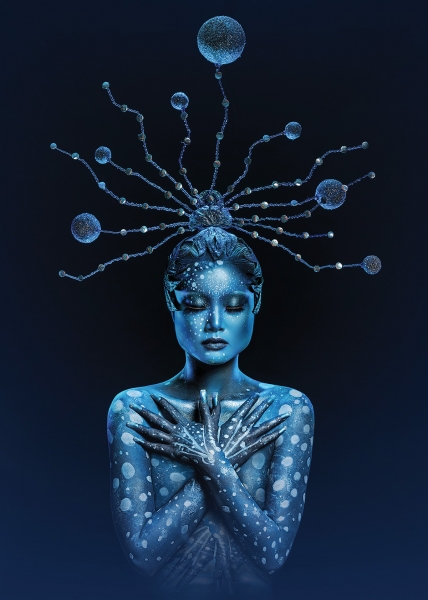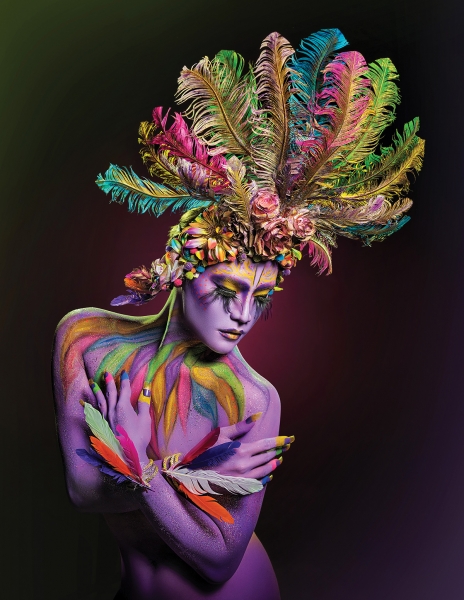Erich Caparas gives photographers an education
Photographer Erich Caparas took up teaching to share his skills with other photographers
• October 2019 issue
Stepping back to help others move forward © Erich Caparas
© Erich Caparas
Erich Caparas

Erich Caparas
In 2002, after 22 years working as a photographer and graphic designer, Erich Caparas, M.Photog., walked away. “I was burned out,” he says of his career in the commercial niche. He craved something different, so he moved to Florida to become, of all things, a real estate broker.
For nine years, Caparas built his brokerage business. But photography wasn’t done with him yet. In 2011, he picked it up again as a hobby. “When I quit in 2002, it was the beginning of digital photography,” he says. “Even though I was doing digital from 1990 to 2002, I was doing film. We were scanning film with a scanner and putting it into digital media. I was not doing DSLR.” When he returned to photography in 2012, he invested in a digital camera for the first time—a Nikon D3. And instead of returning to his commercial roots, he delved into artistic portraiture, something he’d dabbled in previously.

Reinvigorated by his new work, he began posting his portraits to Facebook. “I noticed that everybody was in awe of my postings, asking me how it was done,” he says. Based on the social media feedback, he realized that many digital photographers lacked basic photography and post-processing skills. A lightbulb went on: There was a market for sharing his skills and experience with peers who needed guidance.
“So that’s how it started,” says Caparas of his current career as a photography educator. He sold his brokerage interest to his partner this year and now has complete freedom to travel widely to teach photography workshops.
Each year he spends several months in Asia teaching workshops in various locales—Hong Kong, Bangkok, Indonesia, and Myanmar, to name a few. He also teaches workshops in his home base of Tampa, Florida, and in California—wherever event organizers request his presence. In the United States, he focuses on one-on-one and three-person workshops. In Asia, he teams up with another photographer to handle 20- to 30-student workshops. He markets workshops primarily through social media and by word of mouth.

For his workshops in Asia, Caparas enlists the help of a designer, a makeup artist, and a local stylist to arrange a photo session in the style and color scheme Caparas desires. “Every step of the way, I am involved,” he says of the process, which begins three months prior to the workshop. He prepares and presents a mood board to the makeup artist, stylist, and designer, who put together a wardrobe and look for the models. “I try not to have expectations because if I have expectations I am usually disappointed,” he says. “I am going with the mood board and with what they can do.” He tells them, “Just surprise me,” knowing that the color scheme is the most important element. Otherwise, he’s happy to be surprised. Many of his own PPA Loan Collection and merit images have been made during these workshops.
Caparas’ workshops are typically two days—the first day for shooting, with lessons on lighting, and the second for editing and post-processing. One-on-one sessions are three days long, allowing the student an extra day to soak in post-processing.
“Anybody can do the light, but the post-processing is where you get your signature,” Caparas says. How you process, the way you tone the image and crop it says a lot about your own sensibility. “I advise them on the tools they need to create an impactful image. Everybody has their own preferences that come out naturally for them. Whether you like it or not, your personality comes out after you have the tools to work with.” He teaches students how to use channel masking, color balancing, blending modes, and other tools in Adobe Photoshop.

To supplement his workshops, Caparas creates video lessons that are given to students before their class so they can begin learning in advance. “I don’t like people to attend the same workshop over and over. I feel bad about them doing that. I think they should just pay for it one time. It’s not good for me moneywise, but it’s a matter of principle,” he says. Releasing the videos ahead of time also allows for more advanced interaction during workshops. Students who have viewed the videos ask informed questions.
After the workshop, Caparas encourages students to join a closed Facebook group, where he posts tips and tricks. Students are encouraged to message him with questions about their own work. And if the question is difficult to answer in writing, he asks for the raw file and sends the student a video demonstrating his process for editing the image—at no cost.
“That is why I’m poor,” he jokes. But no doubt rich in photographer friends.
RELATED: More images by Erich Caparas
Amanda Arnold is the associate editor of Professional Photographer.


 View Gallery
View Gallery


